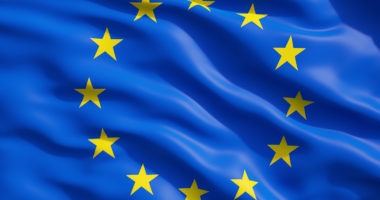What’s the EU’s New Chemical Strategy?
This week (March 15, 2021), the European Council endorsed a new chemicals strategy to set a long-term vision for the European Union’s (EU) chemicals policy. It is asking the European Commission to implement several actions, including streamlining EU chemicals legislation, substituting certain substances, and phasing out certain “non-essential” chemicals.
Inside the EU’s new chemicals strategy
The European Council’s endorsement of a new chemicals strategy follows the adoption by the European Commission’s last October (October 2020) of the EU Chemicals Strategy for Sustainability—Towards a Toxic-free Environment. It is the first step toward a zero-pollution goal for a “toxic-free environment” announced in the European Green Deal and is a component in the EU’s recovery plan from the COVID-19 pandemic.
The strategy aims to achieve a higher level of protection of human health and the environment while strengthening the competitiveness of the EU’s chemicals industry and enabling the green transition of the chemicals sector and its value chains. In endorsing the strategy, the European Council is asking the European Commission to implement the actions specified in the strategy, including targeted amendments to streamline EU chemicals legislation, substituting and minimizing substances of concern, and phasing out the most harmful chemicals for non-essential societal uses. The European Council consists of heads of state or government of EU countries, the President of the European Council, and the President of the European Commission.
 |
|
Stella Kyriakides |
“Our health should always come first. That is exactly what we have ensured in a Commission flagship initiative such as the Chemical Strategy,” said Stella Kyriakides, the European Commissioner for Health and Food Safety, in an October 14, 2020 statement in commenting on the European Commission’s adoption of the new chemical strategy. “Chemicals are essential for our society and they must be safe and sustainably produced. But we need to be protected from the harmful chemicals around us. This Strategy shows our high level of commitment and our determination to protect the health of citizens across the EU.”
The EU already has a set of chemicals legislation in place, which includes registration, evaluation and assessment of chemicals (REACH) requirements and the labelling and classification of chemicals. The overarching goal of the new EU chemicals strategy is that chemicals should be used more sustainably and safely. With respect to REACH, the new chemicals strategy suggests that REACH should be reinforced with targeted revisions regulations to ensure that there is sufficient information on chemicals manufactured or imported into the EU, that substances of concern are rapidly identified, and, where needed, phased out.
In adopting the new chemicals strategy, the European Commission said that stepping up implementation and enforcement of European chemicals legislation is needed to ensure compliance for the whole life cycle of chemicals: production, market entry, release, and disposal. The European Commission offered some data to support that position. It noted that almost 30% of the alerts on dangerous products on the market involve risks due to chemicals and that only one-third of the registration dossiers of the chemical substances registered by industry under REACH are fully compliant with information requirements. The new strategy proposes a number of measures to ensure better controls by authorities, in particular to target imported articles and online sales, including by the use of digital tools. Under the new strategy, the European Commission will carry out audits on the enforcement systems of EU member states and introducing a ‘”one-substance-one-assessment” process.
While relevant to all chemicals, the strategy specifically sets out to ban the most harmful chemicals in consumer products, unless they are deemed “essential” for health, safety, the functioning of society, or if no alternative is available. It also seeks to limit exposure to endocrine disruptors and “persistent substances,” such as per- and polyfluoroalkyl substances unless their use is proven essential for society. The strategy also seeks to reduce the so-called “cocktail effect” of chemicals by taking better account of the risk that is posed to human health and the environment by daily exposure to a wide mix of chemicals from different sources. The strategy also aims that producers and consumers have access to information on chemical content and safe use by introducing information requirements in the context of a Sustainable Product Policy Initiative.
A key component in the strategy, highlighted by the European Council, is the shift of focus to a “safe and sustainable-by-design” approach to factor in the full life cycle of a chemical in the use of a given chemical. “[EU] Member states support this life-cycle approach that takes into account the toxicity of chemicals at all stages of their existence—from manufacture to use, recycling and disposal,” said the European Council in a March 15, 2021 statement, in commenting on the new EU chemicals strategy. This approach also aims to boost innovation and sustainability in the chemicals sector.”
Industry feedback
With the European Council’s endorsement of the new EU chemicals strategy, chemical manufacturers in Europe are calling for “greater policy coherence” across all areas impacting the chemical sector as they support the larger goals for a more sustainable and competitive chemical sector in Europe.
 |
|
Marco Mensink |
“The European chemical industry welcomes the Council’s Conclusions which recognize the chemicals industry’s critical role for advancing the green and digital twin transition in the development of a sustainable and competitive European industry,” said Marco Mensink, Director General of the European Chemical Industry Council (CEFIC), which represents chemical manufacturers in Europe, in a March 15, 2021 statement.
“We support the {European] Council’s recognition of the need for greater policy coherence, as it calls on the European Commission to exploit synergies across chemicals legislation and other policies,” said CEFIC’s Mensink in his statement. “Now that both the Council and the European Parliament asked for a comprehensive strategy that consolidates all policies affecting chemical industry, the time is ripe to establish a forward-looking “Future Chemicals Deal” in Europe—coherent enabling sectoral framework for the chemical industry across all areas of EU policy, from trade to innovation and product legislation. Such policy coherence is essential to attract the unprecedented levels of investments for the Green Deal needs and to ensure these investments in innovative low–carbon and circular economy solutions can be made here in Europe.”
CEFIC emphasizes the need for a holistic approach for European and EU member state authorities dealing with climate, circular economy, innovation, trade, enforcement and digital policies to work more closely with the chemical industry to deliver on the European Green Deal objectives, accelerate the post-COVID-19 Green Recovery and strengthen EU’s strategic value chains. It emphasizes that the EU chemicals strategy should be based on three key pillars: enforcement, implementation, and innovation, which includes further improving the implementation of REACH, the EU’s framework for the registration, evaluation, and assessment of chemicals.
CEFIC’s recommendations for the new chemicals strategy
In a December 2020 position paper on the European Commission’s Chemicals Strategy for Sustainability, CEFIC outlined specific proposals that should be incorporated into the implementation of the chemicals strategy. It supports the “safe-and-sustainable-by-design” approach to factor in the full life cycle of a chemical in the use of a given chemical, but highlighted certain elements that should be addressed as outlined below.
Early determination of product safety. CEFIC emphasizes that the safety of a product needs to be confirmed at an early stage of product development. Building on the REACH database and other tools, CEFIC says there is an opportunity to develop predictive toxicology tools to accelerate chemical safety testing while minimizing animal testing and meeting overall sustainability goals. It emphasizes that banning or restricting the use of chemicals based on their hazardous properties alone does not take the full picture into account and may be counterproductive to sustainability goals.
Product-sustainability assessment. In its position paper, CEFIC stresses that product-sustainability assessment must consider the full life cycle and include as much as possible circularity (including durability), resource-efficiency, energy use, water and land use, contribution to greenhouse gas emissions reduction, and other main societal needs in addition to hazard, use, and exposure information. It says that different value chains may require different criteria and that such assessment should build on product sustainability assessment methodologies that European chemical companies have already conducted and that next to functional requirements and safety, sustainability assessment should be a core element of any alternative assessment when substitution decisions are made.
Safe recycling and re-use of materials. In addition to reducing the overall environmental footprint, CEFIC recommends that the chemicals strategy should contribute to stepping up safe recycling and re-use of materials to keep them in a circular economy by addressing “legacy substances,” exploring innovative digital solutions, and standards to track-and-trace these substances along the value chains to enable the production of high-quality recycled materials.
Considerations for use and exposure. CEFIC says that the chemicals strategy places significant emphasis on “hazardous” substances without due consideration of uses and exposure. It offered as an example high-performance, durable materials, such as those needed for offshore wind turbines that often rely on persistent chemicals but that such chemicals are not emitted to a level that causes harm, do not degrade, and can be recycled at the end of their service life.
Other considerations. In its position paper, CEFIC also stresses that new concepts, such as “essential uses” or “mixture assessment factor” need to be well thought through before being incorporated in legislation and not hamper regulatory predictability, Of particular concern is the proposed broad application of “generic risk management,” which it says disregards exposure and use considerations and could run counter to more targeted, sector-specific legislation. It further emphasizes that definitions and criteria will be crucial and that managing chemicals based on a good understanding of their uses and of potential exposure should continue to be at the core of risk management.
What’s next
The European Commission is establishing a high-level roundtable on the implementation of the Chemicals Strategy for Sustainability, with representatives from industry, science, and civil society. The roundtable will consist of 32 members and will advise the European Commission on realizing the strategy’s objectives in dialogue with concerned stakeholders. The roundtable discussions will focus in particular on how to make chemicals legislation work more efficiently and effectively and on how to boost the development and uptake of innovative, safe and sustainable chemicals across sectors. The call for applications for becoming a member of the group is open until March 18, 2021.






